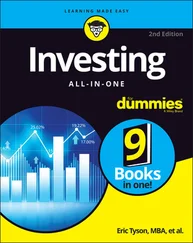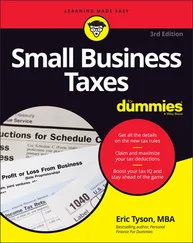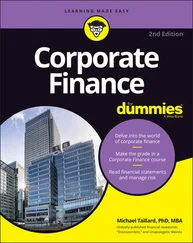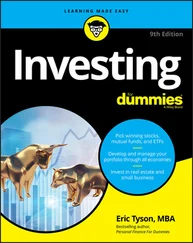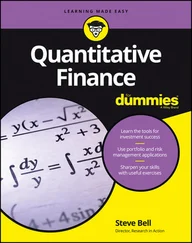Investing in stocks is one of the most accessible ways you can invest for long-term growth. Stocks, which are shares of ownership in companies, historically have produced returns averaging about 9 percent per year. At that rate of return, even without adding to your investment, your money should double about every eight years. Thank the rule of 72 for this doubling. The rule of 72 says that if you divide 72 by your annual return, you’ll determine about how many years it takes to double your money.
When companies go public, they issue shares of stock that can be bought on one of the major stock exchanges, such as the New York Stock Exchange. As the economy grows and companies grow with it and earn greater profits, stock prices generally follow suit. Stock prices don’t move in lockstep with earnings, but over the years, the relationship is pretty close. In fact, the price-earnings ratio — which measures the level of stock prices relative to (or divided by) company earnings — of U.S. stocks has averaged approximately 15 during the past century. Although the ratio has varied and crept above 30 and gone as low as 6, it tends to fluctuate around 15 (it has been slightly higher during periods of low inflation and low interest rates).
 Be forewarned that the U.S. stock market, as measured by the Dow Jones Industrial Average, has fallen more than 20 percent about every six years (the declines in the early and late 2000s were much worse). That’s the bad news. The good news is that these declines lasted, on average, less than two years. So if you can withstand declines over a few years, the stock market is a terrific place to invest for long-term growth.
Be forewarned that the U.S. stock market, as measured by the Dow Jones Industrial Average, has fallen more than 20 percent about every six years (the declines in the early and late 2000s were much worse). That’s the bad news. The good news is that these declines lasted, on average, less than two years. So if you can withstand declines over a few years, the stock market is a terrific place to invest for long-term growth.
 If you’re investing in stocks, keep the following two suggestions in mind to help you build wealth faster in the stock market:
If you’re investing in stocks, keep the following two suggestions in mind to help you build wealth faster in the stock market:
Reduce fees and commissions while investing. Not only does excessive trading lead to your possibly being out of the market on the best days and reduce your returns, but it also can increase your transaction costs and taxes. A simple way to stack the stock market odds in your favor is to minimize fees and commissions when investing. That means after you make an investment, you must resist the urge to buy and sell, which raises your fees and commissions. All things being equal, lower commissions and fees paid to purchase and hold investments increase your investment returns.
Regularly save and invest. Thanks to the miracle of compounding, if you save and invest $5,000 per year in a tax-deferred account returning an average of 10 percent per year, you’ll have about $440,000 in 20 years.
DON’T FALL INTO THE TRAP OF TIMING THE STOCK MARKET
A big mistake that novice investors make is trying to time the stock market; that is, they jump in when they think prices will rise and jump back out when they believe prices will fall. Even for the best professional investors, market timing is difficult, if not impossible, to do. It’s far more important and valuable to regularly save and invest than attempt to time the market. Inevitably, those who try to time the markets earn inferior returns.
Professors Geoffrey Friesen and Travis Sapp examined 14 years’ worth of money flows for more than 7,000 mutual funds. They found that timing decisions by investors reduced their annual returns by about 1.6 percent per year below what those investors would have earned through buying and holding. This underperformance persisted and was consistent through both up and down markets.
The professors found that investors made worse timing decisions when it came to withdrawals (selling) than they did with purchases (buying). The investors’ selling decisions led to an annual underperformance of about 1.8 percent per year versus underperformance of just 0.7 percent per year with buys. These numbers make sense because, more often than not, folks who panic and sell during a stock market decline tend to sell nearer the end of the decline and then fail to get back in before the rebound, which is usually sharp.
It’s the rare market timer who beats the market average returns. Many of these folks actually underperform a “buy and hold” approach. The reason for the underperformance is quite simple: The stock market can move up quickly, and if you’re sitting on the sidelines during one of these high moves, you miss out. That’s exactly what happened to many folks during the strong stock market rebound that ensued after the steep declines in early 2020 due to the government-mandated lockdowns and economic shutdowns during the COVID-19 pandemic and in 2008 and early 2009.
Investing in mutual funds and ETFs
Mutual funds and exchange-traded funds (ETFs) are ideal investment vehicles to help you carry out your investment plans. The three main advantages of the best mutual funds and ETFs are
Diversification: Mutual funds and ETFs typically invest in dozens of securities. A truly diversified stock fund invests in stocks in different industries and different stocks within an industry. The same logic works for bond funds, too.
Efficiency: Good money managers don’t come cheaply. However, because funds buy and sell large blocks of securities and typically manage hundreds of millions or billions of dollars, the cost of their services is spread out and quite economical for you.
Professional oversight: Unless you have lots of money and free time on your hands, researching investments will, at best, be a part-time hobby for you. A fund manager and his or her team of analysts are devoted full time to selecting investments and monitoring them on an ongoing basis.
 The best mutual funds offer a low cost, professionally managed way to diversify your investment dollars. Index funds, which are a type of mutual fund, invest to follow a specific stock or bond market index and usually have the advantage of low costs, which helps boost your returns. ETFs are generally index-like funds that trade on a stock exchange. (See the section “ Index and exchange-traded funds” later in this chapter for more details on those types of funds.)
The best mutual funds offer a low cost, professionally managed way to diversify your investment dollars. Index funds, which are a type of mutual fund, invest to follow a specific stock or bond market index and usually have the advantage of low costs, which helps boost your returns. ETFs are generally index-like funds that trade on a stock exchange. (See the section “ Index and exchange-traded funds” later in this chapter for more details on those types of funds.)
Several different types of funds exist. Which ones work for you depends on the level of risk you desire and are able to accept. Here’s a list of the types you may choose:
Money market funds: These funds are the safest types of mutual funds. Money market funds seek to maintain a fixed share price of $1 per share. They invest in short-term debt of companies and governments. You make your money from the dividends, just like you would with a bank savings account’s interest. The main difference and advantage that the best money market funds have over bank savings accounts are that the better ones generate a higher yield or rate of return. Because there’s little, if any, risk of bankruptcy, money funds aren’t insured the way bank accounts are.
Bond funds: The attraction of bond funds, diversified portfolios of bonds, is that they pay higher dividends than money market funds. So, for retirees who want more current income on which to live, bond funds can make sense.The drawback or risk of bonds is that they fluctuate in value with changes in interest rates. If the overall level of interest rates rises, the market value of existing bonds decreases. This occurs because with new bonds being issued at higher interest rates, the price of existing bonds must decrease enough that the resulting yield or interest rate is comparable to that offered on new bonds. Longer-term bonds are more volatile with changes in interest rates because your principal is being repaid more years down the road.The value of bonds issued by corporations also may fluctuate with the financial fortunes of the company. When a company hits a rough patch, investors question whether their bonds will be repaid and drive the price down. When investors fear bankruptcy is a real possibility, the bonds may sell for only a fraction of the original debt or principal.
Читать дальше

 Be forewarned that the U.S. stock market, as measured by the Dow Jones Industrial Average, has fallen more than 20 percent about every six years (the declines in the early and late 2000s were much worse). That’s the bad news. The good news is that these declines lasted, on average, less than two years. So if you can withstand declines over a few years, the stock market is a terrific place to invest for long-term growth.
Be forewarned that the U.S. stock market, as measured by the Dow Jones Industrial Average, has fallen more than 20 percent about every six years (the declines in the early and late 2000s were much worse). That’s the bad news. The good news is that these declines lasted, on average, less than two years. So if you can withstand declines over a few years, the stock market is a terrific place to invest for long-term growth. If you’re investing in stocks, keep the following two suggestions in mind to help you build wealth faster in the stock market:
If you’re investing in stocks, keep the following two suggestions in mind to help you build wealth faster in the stock market: The best mutual funds offer a low cost, professionally managed way to diversify your investment dollars. Index funds, which are a type of mutual fund, invest to follow a specific stock or bond market index and usually have the advantage of low costs, which helps boost your returns. ETFs are generally index-like funds that trade on a stock exchange. (See the section “ Index and exchange-traded funds” later in this chapter for more details on those types of funds.)
The best mutual funds offer a low cost, professionally managed way to diversify your investment dollars. Index funds, which are a type of mutual fund, invest to follow a specific stock or bond market index and usually have the advantage of low costs, which helps boost your returns. ETFs are generally index-like funds that trade on a stock exchange. (See the section “ Index and exchange-traded funds” later in this chapter for more details on those types of funds.)
